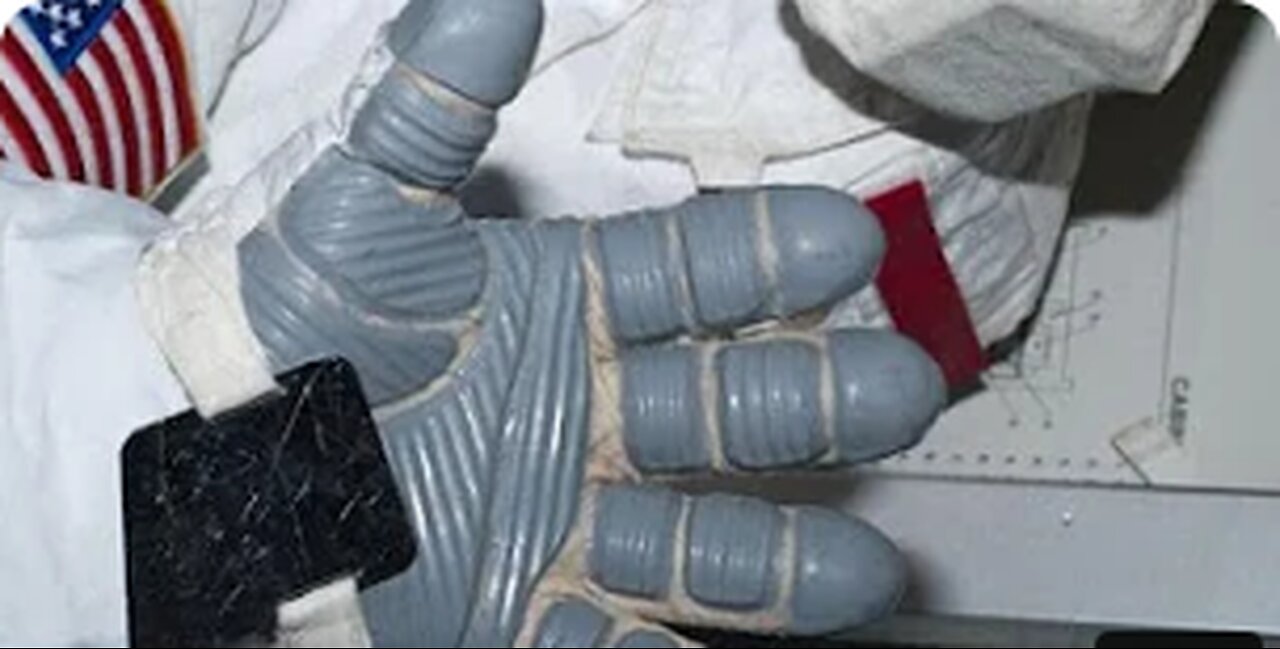Premium Only Content

HOW IT WORKS : Space Suit on ISS
The space suit, or Extravehicular Mobility Unit (EMU), plays a critical role in enabling astronauts to safely venture outside the International Space Station (ISS) and conduct spacewalks or Extravehicular Activities (EVAs). These suits are marvels of engineering designed to protect astronauts from the harsh conditions of space while providing them with the life support and mobility needed to perform their tasks. Here's how the space suit works on the ISS:
1. **Protection from Space Environment:** The space suit provides a vital barrier between the vacuum of space and the astronaut's body. It shields them from extreme temperatures, harmful solar radiation, and micrometeoroids that could pose a threat to their safety.
2. **Pressure and Life Support:** Just like a spacecraft, the space suit is a self-contained environment that maintains a stable pressure and ensures the astronaut can breathe. The suit contains a life support system that includes oxygen tanks, a carbon dioxide removal system, and a water-cooling system to regulate temperature.
3. **Layers of Protection:** The space suit is composed of multiple layers for various purposes. The outermost layer, made of durable materials, provides resistance against abrasion and thermal stresses. Beneath that, several layers of insulation help regulate temperature and provide padding for comfort.
4. **Helmet and Visor:** The helmet of the space suit is equipped with a visor that shields the astronaut's eyes from the intense sunlight and harmful ultraviolet radiation. The visor is coated to reduce glare and prevent excessive heating.
5. **Communication and Data:** The helmet also contains a communication system that enables the astronaut to stay in constant contact with their fellow crew members and mission control. It also features a heads-up display that provides critical information, such as oxygen levels and suit diagnostics.
6. **Gloves and Mobility:** The gloves of the space suit are designed to allow dexterity and tactile sensation, enabling astronauts to manipulate tools and equipment during their tasks. Joints and bearings in the suit's arms and legs provide flexibility and mobility, although moving in space requires a different technique due to the lack of gravity.
7. **Tethering and Safety Systems:** Astronauts wear a "Simplified Aid for EVA Rescue" (SAFER) device, a small backpack with thrusters, in case they become untethered during an EVA. This device allows them to propel themselves back to the station.
8. **Preparation and Egress:** Before leaving the ISS for a spacewalk, astronauts undergo a meticulous pre-breathe protocol to purge nitrogen from their bodies and prevent decompression sickness. They enter the suit through a special airlock and are assisted by their crewmates to ensure a secure and airtight seal.
9. **Training and Practice:** Astronauts undergo extensive training in the Neutral Buoyancy Laboratory, a massive underwater pool, to simulate the weightlessness of space. This training helps them practice handling the suit, tools, and equipment they will use during their spacewalks.
10. **Return to the ISS:** When the spacewalk is complete, astronauts re-enter the airlock, and the interior of the suit is cleaned to prevent contamination of the ISS. After re-pressurization, they can remove their helmets and gloves, marking the successful conclusion of their EVA.
In summary, the space suit worn on the ISS is a technologically advanced piece of equipment that ensures astronaut safety and enables them to carry out critical tasks in the challenging environment of space. Its intricate design and careful engineering make it an indispensable tool for exploration and research beyond Earth's boundaries.
-
 5:35
5:35
Dermatologist Dr. Dustin Portela
18 hours ago $1.10 earnedUnboxing Neutrogena PR Box: Skincare Products and Surprises!
8.82K1 -
 11:20
11:20
China Uncensored
17 hours agoCan the US Exploit a Rift Between China and Russia?
9.89K13 -
 2:08:48
2:08:48
TheSaltyCracker
12 hours agoLefty Grifters Go MAGA ReeEEeE Stream 12-22-24
208K638 -
 1:15:40
1:15:40
Man in America
15 hours agoThe DISTURBING Truth: How Seed Oils, the Vatican, and Procter & Gamble Are Connected w/ Dan Lyons
123K114 -
 6:46:07
6:46:07
Rance's Gaming Corner
17 hours agoTime for some RUMBLE FPS!! Get in here.. w/Fragniac
161K3 -
 1:30:48
1:30:48
Josh Pate's College Football Show
16 hours ago $10.57 earnedCFP Reaction Special | Early Quarterfinal Thoughts | Transfer Portal Intel | Fixing The Playoff
93.6K1 -
 23:55
23:55
CartierFamily
3 days agoElon & Vivek TRIGGER Congress as DOGE SHUTS DOWN Government
134K155 -
 5:43:44
5:43:44
Scammer Payback
2 days agoCalling Scammers Live
226K30 -
 18:38
18:38
VSiNLive
2 days agoProfessional Gambler Steve Fezzik LOVES this UNDERVALUED Point Spread!
162K20 -
 LIVE
LIVE
Right Side Broadcasting Network
10 days agoLIVE REPLAY: President Donald J. Trump Keynotes TPUSA’s AmFest 2024 Conference - 12/22/24
3,263 watching